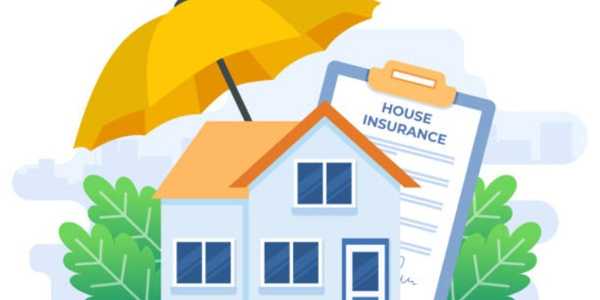What Does Home Insurance Cover?
Let’s picture the scenario, shall we? You have recently moved into your dream home. The walls are freshly painted, the furniture is all set up and everything is soothing. But then a pipe bursts flooding your basement, or a burglar smashing through the windows to steal your valuables. Boom! You are in disaster. This is where home insurance comes in. Home insurance works as a backup plan, which can guard your possessions from severe damage.
The Aspects that Home Insurance Covers
At the root, home insurance policies protects property from numerous risks. Here’s what integrally components of your coverage are likely to include:
1. Dwelling Coverage
This part of your policy covers the house dwelling, all the possessions that are contained within it and everything else that makes the home. Whether it is demolish by extreme hail, fire, or vandalism. Dwelling coverage helps you repair or rebuild your house.

As an example, if a storm comes and damages your roof, your insurer will pay for repairs, and in some cases even pay for a full replacement based on the amount of damage done. Earthquakes and floods are examples of natural disasters that will usually need to be covered under their own separate policies unless explicitly added to your standard plan.
2. Personal Property Protection
From electronics to clothes, personal belongings are also covered under the majority of home insurance policies. Personal property protection commences once items inside your dwelling are stolen or damaged in events that are covered by insurance.
Assume that a burglar comes into your house and steals your TV and laptop. With personal property coverage, you can make a claim so that they can replace those items. Most of the time, insurers will directly reimburse based on actual cash value (ACV), which considers depreciation but does not completely pay, or replacement cost, which pays for new versions of lost items.
Standard policies often provide lower limits for high-value items like jewelry, art, or collectibles. To schedule these valuables with riders or endorsements, it is highly recommended to ensure full coverage for your valuables.
3. Liability Protection
Unexpected events take place, and liability coverage protects you from possible lawsuits if an individual gets injured on your premises, or if you inadvertently inflict damage somewhere else. For example, a visitor who injures themselves while using the restroom may have their medical and legal expenses covered by your policy.
Furthermore, liabilities are not just limited to space. Imagine you are having a barbeque with members of the community and during the process, your toddler accidentally topples over the grill resulting in a little fire which burns part of a neighbor’s fence. In that scenario, the liability coverage of your home can help settle the repair bill for the fence.
4. Additional Living Expenses (ALE)
If your property becomes unlivable after an insured event, for example, a flood or fire, you will require an alternative place to stay until the repairs are complete. In such cases, ALE coverage is relevant as it pays for temporary accommodations, dining, and other necessary expenses until you are able to return home.
This provision ensures that you will not have to go bankrupt just because you needed to live in a new location for some time. Keep in mind though, ALE coverage does impose limits, so do make sure to read your policy closely to know how much aid is provided.
Premises that are Often Excluded: Understanding What’s Not Covered
It is a well-known fact that home coverage is never without limits, and this is the case for each and every insurance policy. Some damages and situations are expressly excluded from the policies. Here are a few common exclusions that one should be careful of:
Floods and Earthquakes: Standard home coverage policies are unlikely to ever include includes damages caused by floods or earthquakes. These events require special policies to be purchased separately.
Pests and Infestation: Damage inflicted by rodents or termites… is often not covered unless these pests neglected the damage.
Wear and Tear: General maintenance problems such as cracked walls and roofs that tend to leak due to normal aging won't qualify for claims. A diligent maintenance schedule will be the best remedy for unforeseen problems that can be expensive to deal with.
Mold Damage: Mold damages due to moisture… is often excluded especially when the damages is not due to a covered risk.
These exclusions allow you to find ways to meet the needs that require maximum coverage.
Comparing Different Types of Home Insurance Policies
Not all home insurance policies cost the same. There are various types of covering provided by the insurance company for a given price. Here are three examples.
1. “HO-3 Policy”
HO-3 policy is the most popular type of insurance taken by homeowners. This policy provides unconditional coverage for the dwelling as well as personal property, insuring the structure against named perils (specific hazards listed in the policy) and personal possessions against all risks.
In other words, if certain items in your home are damaged due to causes like lightning or windstorms, it will most likely be covered. On the other hand, your personal items are given broader coverage unless there is a specific exclusion.

2. ”HO-5 Policy”
An HO-5 policy may suit you better as it is more comprehensible. This policy is similar to an HO-3 policy in that it has open peril for direct physical loss or damage to the premises as well as direct physical loss or damage to the insured’s personal property. Not having an exclusion clause means you are guaranteed a broad coverage.
However, premium costs tend to be higher for HO-5 policies due to their broad scope. Always consider your balance before purchasing.
3. HO-6 Policies Cover Unit Landlords’ Risk (Condo Insurance)
Considerations differ somewhat when one lives in a condominium. For instance, an HO-6 policy provides coverage on the interior of the unit and its contents. This is because external structures and common areas are usually covered by the condo association.
In the process of obtaining condo insurance, it is important to verify that the association’s master policy is not in conflict with yours to avoid overlapping exclusions on coverages.
Scenarios That Illustrate How Home Insurance Works
To make clear how home insurance works in reality, consider the following two examples:
Example 1: Loss of Property Due to Fire
Imagine waking up over the a smoke spewing from the kitchen and was overcome with sleepiness. Grease fire appears to be on the loose and seems to be damaging the cabinet, appliances, and flooring quite severely. Next step would; be calling an emergency service provider and in the following would be to call an insurance provider.
Under the coverage of the dwelling portion of the HO-3 policy whereby structural damage is done to the home setting is verifiable, this is termed as restoration of one’s kitchen. Coverage under personal property allows for burnt stove and refrigerator to be like any other covered property. Lastly, ALE coverage caters for the expenses on hotel stays and meals at restaurants included the paying whilst renovations are made.
Scenario 2: Theft Incident
After a late-night out, I was greeted with distressing signs of a burglary. Some valuable items such as a diamond necklace and designer handbag were missing. You immediately call the police and file a report with the insurance company.
Given that the items taken from the home exceeded the default limits set forth in the insurance policy, you depend on the rider that you previously added. These losses would usually be plausible under the default limit when on a jewelry rider, but thankfully do not have to suffer took reserve that as a solution.
These cases illustrate the need for value-left riders and why their policy has jewelry limits in the first place.
Considerations When Trying to Pick the Perfect Policy
One of the tricky parts of home insurance is finding the sweet spot between affordability and usefulness. Here are a couple pointers to help you out:
Evaluate What You Have: Take note of all the features in your home and valuables and think about how much coverage each item should be insured for. Also remember to consider in any future renovations or belongings purchased.
Get Multiple Quotes: Reach out to a variety of providers for different quotes so you can see the price and coverage comparisons. Lower or no cost options do not equal the best service, value and dependability of the company has to come first.
Read the Fine Print: Look out for language pertaining to what is or is not, as well as limitations to coverage, and if any conditions are enforced put in the policy. If something appears ambiguous, questions must be asked.
Bundle for Savings: Combining home and auto insurance or other coverages can also yield discounts from certain providers. Investigate these possibilities to get the most out of your finances.
Stay Updated: Events such as marriage, birth of a child or even renovations, all have a bearing on the insurance that you might need. Make sure that the policy you have taken is in line with your requirements.

Getting Help for Homeowners
Buying a home is arguably the greatest achievement in life, and with it comes the greatest responsibility. Home insurance is one of the most important tools that prevents your precious savings from going to waste due to unforeseen challenges.
With in-depth knowledge of what home insurance covers and what it generally excludes, you can choose the right policy for your lifestyle and be ready to embrace the responsibilities of home ownership. So, whether you are looking at minor inconveniences or major disasters, rest easy knowing that there is a reliable companion ready to assist you throughout.



